#jennifer wagstaffe
Text












Favourite stage photos of Meg in Masquerade
Kara Klein, Broadway
Kelly Loughan, Broadway
Theano Makariou, Hamburg
Jennifer Wagstaffe, Copenhagen
Kiruna Lind-Devar, World Tour revival
Kiruna Lind-Devar, World Tour revival
Brianne Kelly Morgan, Las Vegas
Ellie Young, West End revival
Unidentified, Tokyo
Unidentified, Nagoya?
Unidentified, Nagoya
Fernanda Muniz, Sao Paulo
#phantom of the opera#meg giry#masquerade#kara klein#kelly loughan#theano makariou#jennifer wagstaffe#kiruna lind devar#brianne kelly morgan#ellie young#fernanda muniz
63 notes
·
View notes
Text
The Changing Role of Restaurant and Bar PR In a Time of Social Distancing

There are more than 1 million restaurants in the U.S., employing an estimated 15.6 million people, according to the National Restaurant Association. The number of bars and drinking establishments, meanwhile, sits at over 60,000, with close to 350,000 working in the sector, per Statista data.
By midweek, a sizable proportion of that population had lost their jobs, after bars and restaurants across the country were shuttered or had their operations severely curtailed. In a bid to curb the spread of the COVID-19 coronavirus, multiple state governments implemented unprecedented measures, restricting on-premise establishments to takeout and delivery only in major cities such as New York, Los Angeles, Chicago, Philadelphia, and Dallas.
Those hit first — and worst — by the measures, were the sector’s hourly-paid staff. But the food and beverage segment of the hospitality industry is also served by numerous supporting industries. From suppliers and distributors (food and beverage) to linen companies, kitchenware manufacturers, and florists — multiple industries took a hit this week when bars and restaurants shut their doors. It may take days, weeks, or even months to fully understand the ramifications of the mass hospitality shutdown.
But for one hospitality-adjacent sector — one that may be invisible to most diners — the impact was immediate. Many public relations firms saw client losses come through fast and furiously.
For those unfamiliar with the business, the goal of a PR agency employed by a bar or restaurant is to raise a venue’s profile via media placements and marketing efforts to drive business, ultimately getting more diners through the door. Close those doors, and the value of that service drops.
“If they’re not open, there’s nothing [for us] to communicate,” one PR professional, who wasn’t authorized to speak on the topic, told VinePair. “When restaurants are having to make the decision to cut staff, obviously the first outside budgets to go is PR.”
The individual, who asked to remain anonymous, spoke of “significant layoffs” and “significant salary reductions” within their agency, after it lost many of its bar and restaurant clients in the space of a week.
“Most of our clients have six-month or one-year contracts, but they pay us monthly,” the PR professional explained. “But not only is this an issue of clients not being able to pay us next month, we don’t know if we’re going to get paid for last month. Not everyone pays on time.”
While the margins in hospitality are notoriously razor-thin, not all bars and restaurants have been forced to part ways with their representation. But just like those working in the hospitality industry itself, many agencies have now found their roles changing on a day-to-day basis, in order to adapt to the current climate.
“This is uncharted territory,” says Mary Wagstaff, the president of Wagstaff Media + Marketing, a public relations firm with offices in five major North American cities.
Instead of pitching their clients’ new menus, or trying to secure interviews for restaurant staff members with media outlets, Wagstaff’s employees now find themselves in a supporting role, keeping their bars and restaurants up to date with any information they may need to navigate the ever-changing hospitality landscape. “We’re all figuring out what the new normal is. And that changes day by day, hour by hour,” she says.
Even if clients won’t be able to pay until a few months down the line, Wagstaff insists that they’re all in this together. “Every client of ours — restaurants, hotels, travel destinations, wine and spirits companies — we don’t see ourselves as separate from those businesses,” she says. “We are them.”
Jenna Gerbino Kaplan, a freelance PR specialist and founder of This One PR, has also noted an “inspiring” sense of community during these unprecedented circumstances. “Owners, bartenders, publicists, reporters – everyone is working towards the greater good,” she says. Gerbino Kaplan is also offering her services to her bar clients at no cost for the foreseeable future.
At North Carolina-based JNK PR, founder Jennifer Noble Kelly is utilizing social media to help her food and beverage hospitality clients.
Her team is monitoring hospitality-focused Facebook groups to keep clients up to date with key information. “We are trying to stay a few steps ahead, so we can advise clients on what shift is coming next, and ways the hospitality industry in other areas is already pivoting,” she says.
Noble Kelly is also encouraging clients to set up daily live video sessions on social media platforms, to share their expertise and engage with consumers during the shutdown. One client, Kingfisher Bar, in Durham, NC, now hosts a virtual cocktail hour every afternoon, with owner Sean Umstead teaching cocktails and mixology techniques.
In Minneapolis, Cast Iron Communications co-founder Dara Levine is working to connect her restaurant clients with both local and national media outlets.
“We’ve been helping our restaurant clients communicate their new offerings — curbside pick up, gift cards, [and] new delivery services — with the local media, [and] we’ve continued to place stories with national media on topics such as pantry staples, home-cook friendly recipes, and more,” she says.
Ultimately, the role of PR is to give restaurants and bars a voice. Right now, the method of communication may have changed — as has the message — but when this pandemic is eventually over, PR agencies will likely be a valuable part of the industry’s comeback.
“When we come through this, every bar and restaurant will be affected differently and they’re going to be focusing on putting that part of their lives back together,” Bullfrog + Baum founder Jennifer Baum, says. “We have strategies and tactics in place for when this calms down, which will enable us to act quickly, and we’re already working with our clients on that.”
In this era of social distancing, there’s hardly a more enticing prospect than a healthy hospitality landscape.
The article The Changing Role of Restaurant and Bar PR In a Time of Social Distancing appeared first on VinePair.
Via https://vinepair.com/articles/restaurant-bar-pr-industry-coronavirus/
source https://vinology1.weebly.com/blog/the-changing-role-of-restaurant-and-bar-pr-in-a-time-of-social-distancing
0 notes
Text
The Changing Role of Restaurant and Bar PR In a Time of Social Distancing
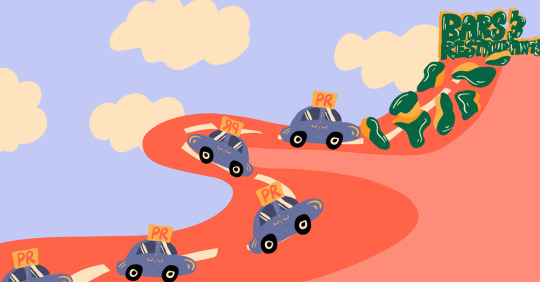
There are more than 1 million restaurants in the U.S., employing an estimated 15.6 million people, according to the National Restaurant Association. The number of bars and drinking establishments, meanwhile, sits at over 60,000, with close to 350,000 working in the sector, per Statista data.
By midweek, a sizable proportion of that population had lost their jobs, after bars and restaurants across the country were shuttered or had their operations severely curtailed. In a bid to curb the spread of the COVID-19 coronavirus, multiple state governments implemented unprecedented measures, restricting on-premise establishments to takeout and delivery only in major cities such as New York, Los Angeles, Chicago, Philadelphia, and Dallas.
Those hit first — and worst — by the measures, were the sector’s hourly-paid staff. But the food and beverage segment of the hospitality industry is also served by numerous supporting industries. From suppliers and distributors (food and beverage) to linen companies, kitchenware manufacturers, and florists — multiple industries took a hit this week when bars and restaurants shut their doors. It may take days, weeks, or even months to fully understand the ramifications of the mass hospitality shutdown.
But for one hospitality-adjacent sector — one that may be invisible to most diners — the impact was immediate. Many public relations firms saw client losses come through fast and furiously.
For those unfamiliar with the business, the goal of a PR agency employed by a bar or restaurant is to raise a venue’s profile via media placements and marketing efforts to drive business, ultimately getting more diners through the door. Close those doors, and the value of that service drops.
“If they’re not open, there’s nothing [for us] to communicate,” one PR professional, who wasn’t authorized to speak on the topic, told VinePair. “When restaurants are having to make the decision to cut staff, obviously the first outside budgets to go is PR.”
The individual, who asked to remain anonymous, spoke of “significant layoffs” and “significant salary reductions” within their agency, after it lost many of its bar and restaurant clients in the space of a week.
“Most of our clients have six-month or one-year contracts, but they pay us monthly,” the PR professional explained. “But not only is this an issue of clients not being able to pay us next month, we don’t know if we’re going to get paid for last month. Not everyone pays on time.”
While the margins in hospitality are notoriously razor-thin, not all bars and restaurants have been forced to part ways with their representation. But just like those working in the hospitality industry itself, many agencies have now found their roles changing on a day-to-day basis, in order to adapt to the current climate.
“This is uncharted territory,” says Mary Wagstaff, the president of Wagstaff Worldwide, a public relations firm with offices in five major North American cities.
Instead of pitching their clients’ new menus, or trying to secure interviews for restaurant staff members with media outlets, Wagstaff’s employees now find themselves in a supporting role, keeping their bars and restaurants up to date with any information they may need to navigate the ever-changing hospitality landscape. “We’re all figuring out what the new normal is. And that changes day by day, hour by hour,” she says.
Even if clients won’t be able to pay until a few months down the line, Wagstaff insists that they’re all in this together. “Every client of ours — restaurants, hotels, travel destinations, wine and spirits companies — we don’t see ourselves as separate from those businesses,” she says. “We are them.”
Jenna Gerbino Kaplan, a freelance PR specialist and founder of This One PR, has also noted an “inspiring” sense of community during these unprecedented circumstances. “Owners, bartenders, publicists, reporters – everyone is working towards the greater good,” she says. Gerbino Kaplan is also offering her services to her bar clients at no cost for the foreseeable future.
At North Carolina-based JNK PR, founder Jennifer Noble Kelly is utilizing social media to help her food and beverage hospitality clients.
Her team is monitoring hospitality-focused Facebook groups to keep clients up to date with key information. “We are trying to stay a few steps ahead, so we can advise clients on what shift is coming next, and ways the hospitality industry in other areas is already pivoting,” she says.
Noble Kelly is also encouraging clients to set up daily live video sessions on social media platforms, to share their expertise and engage with consumers during the shutdown. One client, Kingfisher Bar, in Durham, NC, now hosts a virtual cocktail hour every afternoon, with owner Sean Umstead teaching cocktails and mixology techniques.
In Minneapolis, Cast Iron Communications co-founder Dara Levine is working to connect her restaurant clients with both local and national media outlets.
“We’ve been helping our restaurant clients communicate their new offerings — curbside pick up, gift cards, [and] new delivery services — with the local media, [and] we’ve continued to place stories with national media on topics such as pantry staples, home-cook friendly recipes, and more,” she says.
Ultimately, the role of PR is to give restaurants and bars a voice. Right now, the method of communication may have changed — as has the message — but when this pandemic is eventually over, PR agencies will likely be a valuable part of the industry’s comeback.
“When we come through this, every bar and restaurant will be affected differently and they’re going to be focusing on putting that part of their lives back together,” Bullfrog + Baum founder Jennifer Baum, says. “We have strategies and tactics in place for when this calms down, which will enable us to act quickly, and we’re already working with our clients on that.”
In this era of social distancing, there’s hardly a more enticing prospect than a healthy hospitality landscape.
The article The Changing Role of Restaurant and Bar PR In a Time of Social Distancing appeared first on VinePair.
source https://vinepair.com/articles/restaurant-bar-pr-industry-coronavirus/
0 notes
Photo

New Post has been published on https://toldnews.com/business/weedkiller-glyphosate-a-substantial-cancer-factor/
Weedkiller glyphosate a 'substantial' cancer factor
Image copyright
AFP
A US jury has found that one of the world’s most widely-used weedkillers was a “substantial factor” in causing a man’s cancer.
Pharmaceutical group Bayer had strongly rejected claims that its glyphosate-based Roundup product was carcinogenic.
But the jury in San Francisco ruled unanimously that it contributed to causing non-Hodgkin’s lymphoma in California resident Edwin Hardeman.
The next stage of the trial will consider Bayer’s liability and damages.
During this phase, which starts on Wednesday, Mr Hardeman’s lawyers are expected to present evidence allegedly showing Bayer’s efforts to influence scientists, regulators and the public about the safety of its products.
The German company, which acquired Roundup as part of its $66bn takeover of US rival Monsanto, said it was disappointed with the jury’s initial decision.
“We are confident the evidence in phase two will show that Monsanto’s conduct has been appropriate and the company should not be liable for Mr. Hardeman’s cancer,” the company said.
Bayer continues “to believe firmly that science confirms that glyphosate-based herbicides do not cause cancer”.
The case was only the second of some 11,200 Roundup lawsuits to go to trial in the US.
Another California man was awarded $289m in August after a state court jury found Roundup caused his cancer, sending Bayer shares plunging at the time.
That award was later reduced to $78m and is on appeal.
Regular use
Bayer has argued that decades of studies and regulatory assessments have shown the weed killer to be safe for human use.
Mr Hardeman, 70, treated his property in Sonoma County, California, regularly with the herbicide from 1980 to 2012 and was eventually diagnosed with non-Hodgkin’s lymphoma.
His lawyers Aimee Wagstaff and Jennifer Moore said in a joint statement their client was “pleased” with the decision.
“Now we can focus on the evidence that Monsanto has not taken a responsible, objective approach to the safety of Roundup,” they added.
“Instead, it is clear from Monsanto’s actions that it does not particularly care whether its product is in fact giving people cancer, focusing instead on manipulating public opinion and undermining anyone who raises genuine and legitimate concerns about the issue.”
Image copyright
Getty Images
What is glyphosate and is it dangerous?
Glyphosate was introduced by Monsanto in 1974, but its patent expired in 2000, and now the chemical is sold by various manufacturers. In the US, more than 750 products contain it.
In 2015, the International Agency for Research on Cancer, the World Health Organisation’s cancer agency, concluded that glyphosate was “probably carcinogenic to humans”.
However, the US Environmental Protection Agency insists it is safe when used carefully.
The European Food Safety Authority (EFSA) also says glyphosate is unlikely to cause cancer in humans.
In November 2017 EU countries voted to renew the licence of glyphosate despite campaigns against it.
In California – where a judge had ruled that coffee must carry a cancer warning – the agriculture industry sued to prevent such a label for glyphosate, even though the state lists it as a chemical known to cause cancer.
0 notes
Text
The Changing Role of Restaurant and Bar PR In a Time of Social Distancing

There are more than 1 million restaurants in the U.S., employing an estimated 15.6 million people, according to the National Restaurant Association. The number of bars and drinking establishments, meanwhile, sits at over 60,000, with close to 350,000 working in the sector, per Statista data.
By midweek, a sizable proportion of that population had lost their jobs, after bars and restaurants across the country were shuttered or had their operations severely curtailed. In a bid to curb the spread of the COVID-19 coronavirus, multiple state governments implemented unprecedented measures, restricting on-premise establishments to takeout and delivery only in major cities such as New York, Los Angeles, Chicago, Philadelphia, and Dallas.
Those hit first — and worst — by the measures, were the sector’s hourly-paid staff. But the food and beverage segment of the hospitality industry is also served by numerous supporting industries. From suppliers and distributors (food and beverage) to linen companies, kitchenware manufacturers, and florists — multiple industries took a hit this week when bars and restaurants shut their doors. It may take days, weeks, or even months to fully understand the ramifications of the mass hospitality shutdown.
But for one hospitality-adjacent sector — one that may be invisible to most diners — the impact was immediate. Many public relations firms saw client losses come through fast and furiously.
For those unfamiliar with the business, the goal of a PR agency employed by a bar or restaurant is to raise a venue’s profile via media placements and marketing efforts to drive business, ultimately getting more diners through the door. Close those doors, and the value of that service drops.
“If they’re not open, there’s nothing [for us] to communicate,” one PR professional, who wasn’t authorized to speak on the topic, told VinePair. “When restaurants are having to make the decision to cut staff, obviously the first outside budgets to go is PR.”
The individual, who asked to remain anonymous, spoke of “significant layoffs” and “significant salary reductions” within their agency, after it lost many of its bar and restaurant clients in the space of a week.
“Most of our clients have six-month or one-year contracts, but they pay us monthly,” the PR professional explained. “But not only is this an issue of clients not being able to pay us next month, we don’t know if we’re going to get paid for last month. Not everyone pays on time.”
While the margins in hospitality are notoriously razor-thin, not all bars and restaurants have been forced to part ways with their representation. But just like those working in the hospitality industry itself, many agencies have now found their roles changing on a day-to-day basis, in order to adapt to the current climate.
“This is uncharted territory,” says Mary Wagstaff, the president of Wagstaff Media + Marketing, a public relations firm with offices in five major North American cities.
Instead of pitching their clients’ new menus, or trying to secure interviews for restaurant staff members with media outlets, Wagstaff’s employees now find themselves in a supporting role, keeping their bars and restaurants up to date with any information they may need to navigate the ever-changing hospitality landscape. “We’re all figuring out what the new normal is. And that changes day by day, hour by hour,” she says.
Even if clients won’t be able to pay until a few months down the line, Wagstaff insists that they’re all in this together. “Every client of ours — restaurants, hotels, travel destinations, wine and spirits companies — we don’t see ourselves as separate from those businesses,” she says. “We are them.”
Jenna Gerbino Kaplan, a freelance PR specialist and founder of This One PR, has also noted an “inspiring” sense of community during these unprecedented circumstances. “Owners, bartenders, publicists, reporters – everyone is working towards the greater good,” she says. Gerbino Kaplan is also offering her services to her bar clients at no cost for the foreseeable future.
At North Carolina-based JNK PR, founder Jennifer Noble Kelly is utilizing social media to help her food and beverage hospitality clients.
Her team is monitoring hospitality-focused Facebook groups to keep clients up to date with key information. “We are trying to stay a few steps ahead, so we can advise clients on what shift is coming next, and ways the hospitality industry in other areas is already pivoting,” she says.
Noble Kelly is also encouraging clients to set up daily live video sessions on social media platforms, to share their expertise and engage with consumers during the shutdown. One client, Kingfisher Bar, in Durham, NC, now hosts a virtual cocktail hour every afternoon, with owner Sean Umstead teaching cocktails and mixology techniques.
In Minneapolis, Cast Iron Communications co-founder Dara Levine is working to connect her restaurant clients with both local and national media outlets.
“We’ve been helping our restaurant clients communicate their new offerings — curbside pick up, gift cards, [and] new delivery services — with the local media, [and] we’ve continued to place stories with national media on topics such as pantry staples, home-cook friendly recipes, and more,” she says.
Ultimately, the role of PR is to give restaurants and bars a voice. Right now, the method of communication may have changed — as has the message — but when this pandemic is eventually over, PR agencies will likely be a valuable part of the industry’s comeback.
“When we come through this, every bar and restaurant will be affected differently and they’re going to be focusing on putting that part of their lives back together,” Bullfrog + Baum founder Jennifer Baum, says. “We have strategies and tactics in place for when this calms down, which will enable us to act quickly, and we’re already working with our clients on that.”
In this era of social distancing, there’s hardly a more enticing prospect than a healthy hospitality landscape.
The article The Changing Role of Restaurant and Bar PR In a Time of Social Distancing appeared first on VinePair.
source https://vinepair.com/articles/restaurant-bar-pr-industry-coronavirus/
source https://vinology1.tumblr.com/post/612961742357741568
0 notes
Text
Our Lovely Competition Winners
Thank you to everyone who has entered our competitions. Don’t forget to keep cheeking our blog and social media pages for future competitions.
Here are the details of our lovely winners…
Win new handbag Gem (Facebook Competition)
Winners: Dianne Maycock and Lorraine Partyn
Closing date: 15th April 2019
Win vintage inspired heels Donna (Facebook Competition)
Winner: Jo Donner Grabowski
Closing date: 2nd April 2019
As seen on TV – Win women’s Brooke or men’s Grenada (Facebook Competition)
Winners: Karen Teula and Andrea Beddows
Closing date: 25th March 2019
Win shoes for you and a friend (Facebook Competition)
Winners: Kayleigh Smith and Mum Suzi
Closing date: 11th March 2019
Win active shoes for busy days (Facebook and Instagram Competition)
Winners: @JennaKateKelly and Rachael Harris
Closing date: 25th February 2019
Celebrating 12 months with 12 pairs of shoes (Facebook Competition)
To celebrating the past year we have away 12 pairs of shoes to some lucky Facebook fans
Winners: R Harvey; J Treaner; S Bunker; K Hunt; V Russell; C M Williams; B Gordner; S Hudalestone; C L Patrick; A Scource; D Smith and J Birkin.
Closing date: 2nd January 2019
Win Whisper (Facebook Competition)
Winners: M Hackett and S Levy
Closing date: 24th December 2018
RT to win a Josephine handbag (Twitter Competition)
Winner: @BelindaLew92
Closing date: 24th December 2018
Win heels for the party season (Facebook Competition)
Winner: Jane Willis
Closing date: 17th December 2018
RT to win a pair of our bestselling boots Mystery (Twitter Competition)
Winner: @JennaKateKelly
Closing date: 3rd December 2018
Win new Donna heels for the party season (Facebook Competition)
Winners: Kelly Martin, Karen Austin and Angela Hockham
Closing date: 3rd December 2018
Tell us which colour Dolly bag you’d love to win (Facebook Competition)
Winners: Mary Hutton and Claire Blaney
Closing date: 19th November 2018
Win new Mystery boots for Winter days (Instagram Competition)
Winner: Emma_Franklin23
Closing date: 19th November 2018
Win any style from our latest collection (Facebook Competition)
Winners: Naomi Saxon and Avril Wagstaffe
Closing date: 12th November 2018
RT to win supersoft handbag Dolly (Twitter Competition)
Winner: @MazOpal
Closing date: 12th November 2018
Vote for your favourite boot from Whisper or Pixie for your chance to win a pair (Facebook Competition)
Winners: Sandi Jones and Carolyn Jassi
Closing date: 5th November 2018
Enjoy the cooler days in bestseller boot Whisper (Facebook Competition)
To win a pair of beautiful boots Whisper Facebook fans simply had to leave a comment or like our post.
Winner: Lesley Bambridge
Closing date: 29th October 2018
Win new Ruby boots (Facebook Competition)
We asked Facebook fans to tell us where they would explore in our Ruby boots for their chance to win a pair.
Winners: Su Richardson and Pia Stephens.
Closing date: 23rd October
Win Beautiful boots Belle (Facebook Competition)
We picked one lucky Facebook fan to step out in beautiful boots Belle.
Winner: Lorraine Hayhurst
Closing date: 15th October
Win new shoes for you and a friend (Facebook Competition)
Two Facebook fans were given the chance to win new shoes for them and a friend of their choice.
Winners: Alice Harrison and daughter Debs, Helen Eves and Friend Clare (UK).
Closing date: 28th August 2018
Enjoy stylish wellbeing this season thanks to active style Twist (Facebook and Twitter Competition)
To help our customers get out and about with a spring in their step we gave them a chance to win new active style Twist.
Facebook Winners: Deb Williams; Val Gant and Maria Hackett
Twitter Winner: @Lynddseymour
Closing date: 20th August 2018
Vote for your favourite to win! (Facebook Competition)
We asked Facebook fans to choose between Summer favourites Mabel or Flare for the chance to win a pair.
Winners: Marie Rawsthorne (UK), Penny Everest (UK).
Closing date: 30th July 2018
Win shoes for you and a friend (Facebook Competition)
To win a new pair of shoes for you and a friend we simply asked Facebook fans to tell us who they would love to win new shoes for.
Winners: Lucy Devereux-Cooke and friend Philippa (UK)
Closing date: 16th July 2018
Explore in style with new active shoes (Twitter Competition)
We gave Twitter fans the chance to win a pair of active shoes for those Summer adventures by simply telling us why they would like to win.
Winner: @xLyndyx
Closing date: 16th July 2018
Game, Set, Match! Win active shoes to celebrate Wimbledon (Facebook Competition)
To celebrate the start of Wimbledon we gave our fans the chance to win new shoes for active days.
Winner: Michele Hall, UK
Closing date: 9th July 2018
Enjoy the Summer with a new pair of smart sandals (Twitter)
To celebrate the heatwave we gave away a pair of sandals to one of our Twitter followers.
Winner: @JoGodFray, UK
Closing date: 9th July 2018
Win new women’s and men’s shoes (Facebook Competition)
We asked Facebook fans which style from our latest collection they would like to win and who for. Lucky winner Anita won shoes for her mum and Jacqueline won new shoes for her husband.
Winners: Anita Tunstall, UK and Jacqueline Longmuir, UK
Closing date: 25th June 2018
A Royal Hotter Spotter
To celebrate the Royal Wedding we asked you to spot one of the Royal Ambassadors who were wearing Hotter Shoes and share a photo with us. The lucky winners won a pair of shoes from our limited edition collection.
Winners: Twitter – @KazWeedon, Facebook – Pauline Beverage, Linda McCaig, Mandy Hall and Sarah Walker.
Closing date: 21st May 2018
Royal Wedding Vote (Facebook Competition)
We asked Facebook fans to tell us which style from the Royal Wedding Collection got their vote. The lucky winners won a pair of shoes from our limited edition collection.
Winners: Peter Hayhurst, Katherine Burrows and Betty Higginbotham.
Closing date: 21st May 2018
Win shoes for those doggy walking days (Facebook Competition)
Facebook fans were giving the chance to win new shoes for getting out and about with their canine friends. The lucky winners were sent a new pair of shoes each for exploring the great outdoors.
Winners: A Whitbread, R Smith and C L Parker.
Closing date: 12th March 2018
Win a year’s supply of flowers and new shoes (Catalogue Competition)
To celebrate the new Spring collection and season we gave customers the chance to win a year’s supply of flowers and new shoes in a floral print.
Winner: Mrs Calland, Bridlington, UK
Closing date: 18th April 2018
Win any style from our new Spring collection! (Facebook Competition)
Planning ahead for sunny days we gave Facebook fans the chance to win any pair from our new Spring collection.
Winners: N Dean, L Stokes and R Greef.
Closing date: 5th March 2018
Win new style Brooke to step out in style this Spring (Facebook Competition)
We asked Facebook fans to tell us which colour Brooke they would love to wear for their chance to win a pair
Winners: R Davies, T K Nixon and Mary G Jordan
Closing date: 26th February 2018
Win a pair of Leanne GTX® (Facebook & Instagram Competition)
For a chance to win a pair of Leanne GTX® we asked readers to tell us where they would step out in, in their new shoes.
Winners: E Milek, H Young, D Cox, Boostieboo, Lizziem431 and Christie7504
Closing date: 19th February 2018
Win new shoes to celebrate our partnership with Marie Curie (In Store Competition)
In February 2018 we gave Hotter shoe fans who visited selected Marie Curie stores the chance to win new shoes.
Winners: S Morris, Solihull UK; L McNully, Glasgow, UK; K Sellick, Cheshire, UK; H Dobson, Exeter UK; G Riley, Southport, UK.
Win new shoes from our Valentine’s edit (Facebook Competition)
We asked Facebook fans which style from our Valentine’s edit would be their perfect match. Three winners were picked to receive new shoes.
Winners: E Wilson, W Allen and C Bodin
Closing date: 14th February 2018
Win #HotterOriginal style Shake in Loden Green (Facebook Competition)
To celebrate the festive season we gave Facebook fans the chance to win a new pair of Shake.
Winners: A Bain, S Tapp and J Took
Closing date: 15th December 2017
Win a pair of winter warming boots Belle (Gransnet Competition)
Gransnet readers were given the chance to win a pair of beautiful boot Belle as part of their Christmas competitions event.
Winner: M Lightbody, Hants, UK
Closing date: 13th December 2017
Win a pair of bestselling boot Whisper (Facebook Competition)
We asked Facebook fans to visit our website and tell us which colour Whisper they would love to step out in.
Winner: Jackie L Burton, West Midlands, UK
Closing date: 27th November 2017
Win new slippers for Winter days (Facebook Competition)
For their chance to win a pair of Rhianna slippers Facebook fans told us why they would love to win.
Winners: A Bayes, J Warner and B Robb.
Closing date: 13th November 2017
#HotterWalkies Competition
We asked Hotter fans to share photos of their canine friends on #HotterWalkies for the chance to win new shoes and a treat for their pet.
Wnner: S Smail, Dorset, UK
Closing date: 31st October 2017
Win a pair of Dew (Facebook Competition)
Blogger Penny Carr shared with us 25 activities you can do in Dew to celebrate its birthday, and to celebrate this milestone, we asked Facebook fans for their suggestions for a chance to win a pair.
Winners: Caroline Ruffell, Tiffany Crawford, Jennifer Lees, Geri Gibson and Pam C Smith.
Closing date: 4th September 2017
Share your favourite coastal walk for the chance to win a new pair of shoes (Facebook Competition)
Facebook fans shared tales and photos of their favourite coastal walks from around the world.
Winners: Lorna Wood and Sarah Tye.
Closing date: 29th August 2017
Win new shoes! (www.hotter.com)
Each month we give our customers a chance to win new shoes from the latest collection. Congratulations to all our winners so far and we hope you are enjoying your new shoes.
UK Winners
November 2016: Miss L Paton, Hampshire
December 2016: Mrs L Platt, Cornwall
January 2017: Mrs S Stephens, Swansea
February 2017: Mrs K Cole, Yorkshire
March 2017: Miss E Dela Cruz, Glasgow
April 2017: Mrs M Bachmann, Essex
May 2017: Mrs A Fowler, North Yorkshire
July 2017: Linda Seymour, UK
USA Winners
December 2016: Ms D Hedgcoth, TX
January 2017: Mrs C Zderad, MN
February 2017: Mrs V Lyles, MI
March 2017: Mrs C Norville, MA
April 2017: Mrs S Linarez, WA
July 2017: Rose Marie Rucker, VA
Win a Hotter handbag (Facebook Competition)
We asked you to tell us in a rhyme why you love Hotter.
Winner: Christine O’Prey
Closing date: 7th August 2017
Win a pair of #HotterOriginals (Facebook Competition)
Facebook fans told us which Hotter Original pair was their favourite and why for the chance to win a pair.
Winner: Wendy Roach
Closing date: 24th July 2017
Win a pair of Daisy shoes (Facebook Competition)
For their chance to win Facebook fans had to tell us why they would love to win a pair of skater style shoes Daisy.
Winner: Greig Spencer
Closing date: 17th July 2017
Win a pair of summer sandals Flare (Facebook Competition)
We asked Facebook fans to tell us who they would love to win a pair of Flare sandals for and why.
Winner: Doreen Locke
Closing date: 10th July
Win cool canvas bag Eva (Facebook Competition)
We asked Facebook fans to tell us where they would use their new handbag if they were to win.
Winner: M Gash, Barnsley, UK
Closing date: 3rd July 2017
Sign up to our newsletters to win a new pair of shoes (Catalogue Competition)
Winner: Mrs Vandalen
Closing date: June 2017
Sign up to our newsletters to win a pair of #HotterOriginals (Catalogue Competition)
Winner: Mrs Grothe
Closing date: June 2017
Win a beautiful Blossom scarf (Facebook competition)
We gave Facebook fans the chance to win a beautiful Blossom scarf to accessorise with this Summer.
Winners: H Hodgson; J Morgan; B Stewart; K Esgate; V Nunn; G W Wright; E Scott; D Harmartuk; J Dawn and J Morgan.
Closing date: 12th June 2017
Nominate A Nurse To Win New Shoes
To celebrate National Nurses Week we gave away 100 pairs of shoes to healthcare professionals via our stores and online at www.hotter.com.
Winners:
Online – E Sly, G Smith, D Leigh, L Powell, M McGunigle, A Antobus, S J Etchells, L Price, K Chapman, M Grant, C Healey, Mrs A Hodgson, J White, N Able, J Barnad, C Foster, Mrs G Jardine, K Smith-Bishton, S Forbes
Stores – P R Wheale – Banbury, A Buller – Barnstaple, J Meredith – Carmarthen, Mrs E Cole – Cirencester, C Cottrell – Darlington, L Collins – Milton Keynes, B Evans – Shrewsbury, L Lusby – Stratford Upon Avon, S Cook – Sutton Coldfield, H Maguire – Truro, V Roach – Uxbridge, G De Maria – Watford, Z Spink – Windsor, C Churchill – Worthing.
Closing date: 30th May 2017
Sign up to our newsletter for the chance to win Hotter Originals (USA)
Winners:
May 2017 – Mrs V Jeglum; April 2017 – Ms Benson
Win a pair of Resort sandals (Facebook competition)
To celebrate the opening of our Holiday Shop we asked Facebook fans to tell us which colour Resort sandal they would love to step out in this Summer.
Winner: E W Beer, Bristol
Closing date: 22nd May 2017
RT to win a Blossom scarf (Twitter competition)
Winner: S Murray, Gretna
Closing date: 22nd May 2017
Win a pair of fabulous flats Lily (Facebook competition)
Winner: K Ashe, Essex
Closing date: 10th April 2017
Win New Shoes (Blog Competition)
Winner: A Mary
Closing date: 31st March 2017
Win a pair of ballerina pumps Jewel (Facebook competition)
Winner: C Maybury, Hertfordshire
Closing date: 20th February 2017
Win red shoes for Valentine’s Day (Facebook competition)
Winner: J Cooke, Milton Keynes
Closing date: 14th February 2017
Win the perfect pair #HotterChirstmas
To win the perfect pair of shoes for the festivities we asked our Instagram fans to like or comment on our festive photo.
Closing date: 28th November 2016
Winner: J Baxter, Leicester
Win a pair of Hotter Originals
We asked our Twitter fans to RT our post for the chance to win a pair of shoes or boots from our Hotter Originals collection.
Closing date: 11th October 2016
Winner: L Prestage, Essex
Win a floral gift for Valentine’s Day
This Valentine’s, we sent 20 special customers a floral gift, and because we love our Facebook fans too, we also gave them the chance to win a floral gift.
Closing date: 15th February 2016
Winners: C Batt, Milton Keynes, UK; P Hutchinson, Derbyshire, UK; L Abrahams, Bath, UK; H Rea, Colchester, UK and J Butler Harrogate, UK
Win new shoes from our Spring collection
To celebrate the launch of our Spring 2016 collection, we asked Facebook fans to tell us which style they would love to win and why.
Closing date: 1st February 2016
Winner: Mrs Corrin, Southport, UK
Win your favourite five pairs
We asked Hotter fans to tell us their favourite five pairs for the chance to win them.
Closing date: 31st January 2016
Winners: S S Eastwood, OH, USA; K Gunther, NY, USA; A Lilly, WA, USA and J A Lee, AL, USA
Win a pair of h92 shoes
We asked ‘It’s A Shoe Thing’ readers to tell us what #h92islighterthan for their chance to win a pair from the collection.
Closing date: 24th January 2016
Winner: K Hipkin, Newcastle, UK
Win a pair of the lightest shoes we’ve ever had
Exclusively for Facebook fans, we hosted a competition to win a pair of shoes from our h92 collection to celebrate Tim Peake being the first British astronaut to carry out the first ever spacewalk.
Closing date: 18th January 2016
Winner: G Sharps, Manchester, UK
Our Lovely Competition Winners published first on https://workbootsandshoes.tumblr.com/
0 notes
Text
Pumping Up the Pesticides
Glyphosate, the active ingredient in Monsanto’s Roundup, is the most widely used herbicide, sprayed with unprecedented abandon throughout the world.1 The consequences of this practice are now becoming apparent, with weeds becoming increasingly resistant to it — and a jury finding in yet another landmark trial that the chemical caused cancer.
With the resistance, farmers sold a bill of goods about glyphosate are now scrambling to find a solution for uncontrollable weeds that have outsmarted the man-made chemical. The solution from agribusinesses entities is to introduce new genetically engineered (GE) crops designed to withstand not only glyphosate but also additional herbicides to kill off the weeds glyphosate leaves behind.
Enlist E3 soybeans, made by Corteva Agriscience, a division of DowDupont and seed company MS Technologies, is one of the latest, designed to tolerate glyphosate, glufosinate (another herbicide) and 2,4-Dichlorophenoxyacetic acid (2,4-D), one of the ingredients in Agent Orange, which was used to defoliate battlefields in the jungles of Vietnam, with horrendous consequences to the health of those exposed.
Use of 2,4-D May Increase 600% by 2020
The U.S. Environmental Protection Agency (EPA) approved the use of Enlist Duo — an herbicide manufactured by Dow Chemical that combines 2,4-D with Roundup, to be used on corn and soybeans genetically engineered to tolerate both 2,4-D and glyphosate — in 2014.
“The U.S. Department of Agriculture estimates that by 2020, the use of 2,4-D on America's farms could rise between 100% and 600% now that it has been approved as part of Enlist Duo,” the National Resources Defense Council (NRDC) stated.2
2,4-D is also a common ingredient in “weed and feed” lawn care products, because it kills weeds without harming grass, fruits or vegetables, the latter of which makes it very popular among farmers.
This is concerning because the International Agency for Research on Cancer (IARC) ruled 2,4-D a possible human carcinogen in 2015, and there is concern it may increase the risk of Non-Hodgkin lymphoma and soft-tissue cancer known as sarcoma.
Further, it’s an endocrine-disrupting chemical that may negatively affect thyroid hormones and brain development. It may also be associated with birth defects, reduced fertility and brain development.3 “This is just going to absolutely be a disaster,” Nathan Donley, a senior scientist at the Center for Biological Diversity, told Investigate Midwest.4
Will 2,4-D Cause Similar Problems as Dicamba?
Monsanto’s Roundup Ready Xtend cotton and soybeans are GE plants designed to tolerate both glyphosate and dicamba, a highly volatile herbicide known for drifting and damaging off-target crops.
Millions of acres across U.S. have been damaged by dicamba drift,5 and there’s also disturbing information that the chemical is also harming trees. Dicamba use has also turned farmers against one another, as those experiencing damaged crops blame neighboring farms for spraying dicamba.
In November 2016, a dispute over dicamba drift turned deadly, when Arkansas soybean and cotton farmer Mike Wallace was shot and killed by another farmer, Allan Curtis Jones, when Wallace confronted Jones about damage Jones’s spraying had done to Wallace’s pear trees. In a jury trial, Jones was found guilty of second degree murder and sentenced to 24 years in prison for it.6,7
Since then Xtend cotton and soybeans have become prolific in the U.S., in part because some farmers plant them just so they’ll be protected against their neighbor’s dicamba drift.
Now some experts are questioning whether the 2,4-D-resistant crops (Enlist) will be vulnerable to damage from drifting dicamba, and vice versa — will the dicamba-resistant crops be damaged by drifting 2,4-D?
Charles Benbrook, a visiting professor at the University of Newcastle who studies pesticides, told Investigate Midwest that, “If there is no cross-resistance … [he] projected that Corteva, a division of DowDupont, and Bayer, which owns Monsanto, will likely have to come up with a deal to put the resistant genes in both companies’ systems, increasing the price for farmers.”8
What’s more, it’s likely that 2,4-D will cause similar damage as dicamba, as both are known for drifting, and will muddle assessments of which chemical is to blame. Also speaking to Investigate Midwest, Donley said, “Industry is going to use this to say, ‘how do you know it’s our product?’ It’s going to enable the industry to do what they do best, which is sow doubt in the public.”9
The never-ending quest for more pesticides isn’t likely to end here. “It’s a poor answer to a complex situation, and it’s going to be getting worse,” Donley continued. “In five-to-10 years, we’re going to be looking for the next herbicide. History tells us what’s going to happen in this case. It’s kind of crazy we’re even considering going here.”10
Monsanto Loses Another Case
Thousands of people across the U.S. have filed lawsuits alleging that Monsanto’s Roundup herbicide caused them to develop cancer. In March 2015, IARC determined glyphosate to be a "probable carcinogen" based on evidence showing the popular weed-killing chemical can cause Non-Hodgkin lymphoma and lung cancer in humans, along with "convincing evidence" it can also cause cancer in animals.
In August 2018, a jury ruled in favor of plaintiff Dewayne Johnson in a truly historic case against Monsanto. Johnson — the first of over 11,000 cases pending against the chemical company — claimed Roundup caused his Non-Hodgkin lymphoma, and the court agreed.
Monsanto was ordered to pay $289 million in damages to Johnson, although the award was later reduced to $78 million. Now in a second case, a judge ruled in favor of the plaintiff, ordering Bayer, which acquired Monsanto in 2018, to pay more than $80 million.
The jury agreed that Edwin Hardeman’s repeated exposures to Roundup, which he used to kill weeds on his 56-acre property, not only played a role in his cancer diagnosis but also that the company did not warn consumers that the product carried a cancer risk.11
The case was split into two phases, with jurors first finding the chemical to have caused the cancer on purely scientific grounds and the next phase finding that Bayer is liable for damages.12 Ultimately, Hardeman was awarded $75 million in punitive damages, $5.6 million in compensatory damages and $200,000 for medical expenses.13
In a statement, Hardeman's attorneys Jennifer Moore and Aimee Wagstaff, said, "… [T]he jury resoundingly held Monsanto accountable for its 40 years of corporate malfeasance and sent a message to Monsanto that it needs to change the way it does business.”14 Bayer is appealing the verdicts in both cases.
Monsanto Had $17 Million Annual Budget to Discredit IARC, Promote Glyphosate
Another glyphosate trial has begun in California, and evidence is expected to be presented revealing Monsanto is taking a page out of the playbook of Big Tobacco, allocating about $17 million in one year in order to discredit IARC scientists that spoke out against glyphosate. The information came from a deposition of Monsanto executive Sam Murphey, who now works for Bayer. U.S. Right to Know revealed:15
“… [I]mmediately after the IARC classification of glyphosate – and continuing to this day – the cancer scientists became the subject of sweeping condemnation from an assortment of organizations, individuals and even some U.S. lawmakers.
They have been accused of operating not on sound science but on behalf of a political agenda, cherry-picking data, and promoting junk science, among other things. The criticisms have been magnified and repeated around the world in news articles, opinion pieces, blogs, Internet Google advertisements and more.
Internal Monsanto documents that have surfaced through discovery for the more than 11,000 lawsuits filed against the company show that among other tactics, Monsanto has been secretly using third parties for its anti-IARC messaging because company executives and public relations agents thought the information would appear more credible coming from entities separate from Monsanto.”
For instance, in 2017, Henry Miller was thoroughly outed as a Monsanto shill during the 2012 Proposition 37 GMO labeling campaign in California. Miller, falsely posing as a Stanford professor, promoted genetically engineered foods during this campaign.
In 2015, he published a paper in Forbes Magazine attacking IARC’s findings after it classified glyphosate as a probable human carcinogen. Later it was revealed that Miller’s work was in fact ghostwritten by Monsanto.
Monsanto ‘Monitored’ Media, Suggested Discrediting Stories
The company also made a point of monitoring media coverage, known as the “let nothing go” strategy, and would follow up with reporters to offer the company’s point of view, a statement or “additional context” on stories they deemed to be unfit.
Murphey also suggested that a Reuters reporter write an article accusing the chairman of the IARC working group on glyphosate of concealing data. The reporter wrote the story, which was picked up by media outlets around the globe, even though the allegations against the IARC chairman were false.16
As it stands, nearly 300 million pounds of glyphosate are used in the U.S. each year,17 with unknown consequences to human health — but what we know so far doesn’t look good. What’s clear is that Monsanto continues to work very hard to suppress any and all negative publicity about its golden child glyphosate, even as the truth continues to emerge.
Ultimately, the question of whether glyphosate causes cancer seems destined to transition to how much glyphosate causes cancer — in what doses and duration?
Bayer is already working on damage control and has created an entity called Partners In Innovation to handle their PR. The team is made up of members from three agencies — Porter Novelli, FleishmanHillard and Global Prairie — all of which previously worked with Bayer or Monsanto (before the merger).18
Pesticides Are Not the Answer
“The reduction of pesticide use is one of the critical drivers to preserve the environment and human health,” according to recent research published in Nature Plants,19 and I couldn’t agree more.
What many people don’t realize is that research shows 59 percent of farmers could cut pesticide usage by 42 percent without harming their production. Forty percent of these farms would even improve their production as a result.20
The findings are eye-opening, especially since the pesticide industry has long maintained that their products are necessary to feed the world. Worldwide, an estimated 7.7 billion pounds of pesticides are applied to crops each year, and that number is steadily increasing.21 Yet, the problems are becoming too big to ignore.
To opt-out of the madness, seek out non-GMO, organic foods as much as possible, and support farmers who are using regenerative and biodynamic farming principles instead of chemical pesticides. And once you've gotten into that habit, check your urine for glyphosate to evaluate your eating habits. If your levels are still high, you're still being excessively exposed, be it through water, food or your environment.
from
http://articles.mercola.com/sites/articles/archive/2019/04/09/pumping-up-the-pesticides.aspx
source http://niapurenaturecom.weebly.com/blog/pumping-up-the-pesticides
0 notes
Text
Pumping Up the Pesticides
Glyphosate, the active ingredient in Monsanto’s Roundup, is the most widely used herbicide, sprayed with unprecedented abandon throughout the world.1 The consequences of this practice are now becoming apparent, with weeds becoming increasingly resistant to it — and a jury finding in yet another landmark trial that the chemical caused cancer.
With the resistance, farmers sold a bill of goods about glyphosate are now scrambling to find a solution for uncontrollable weeds that have outsmarted the man-made chemical. The solution from agribusinesses entities is to introduce new genetically engineered (GE) crops designed to withstand not only glyphosate but also additional herbicides to kill off the weeds glyphosate leaves behind.
Enlist E3 soybeans, made by Corteva Agriscience, a division of DowDupont and seed company MS Technologies, is one of the latest, designed to tolerate glyphosate, glufosinate (another herbicide) and 2,4-Dichlorophenoxyacetic acid (2,4-D), one of the ingredients in Agent Orange, which was used to defoliate battlefields in the jungles of Vietnam, with horrendous consequences to the health of those exposed.
Use of 2,4-D May Increase 600% by 2020
The U.S. Environmental Protection Agency (EPA) approved the use of Enlist Duo — an herbicide manufactured by Dow Chemical that combines 2,4-D with Roundup, to be used on corn and soybeans genetically engineered to tolerate both 2,4-D and glyphosate — in 2014.
“The U.S. Department of Agriculture estimates that by 2020, the use of 2,4-D on America’s farms could rise between 100% and 600% now that it has been approved as part of Enlist Duo,” the National Resources Defense Council (NRDC) stated.2
2,4-D is also a common ingredient in “weed and feed” lawn care products, because it kills weeds without harming grass, fruits or vegetables, the latter of which makes it very popular among farmers.
This is concerning because the International Agency for Research on Cancer (IARC) ruled 2,4-D a possible human carcinogen in 2015, and there is concern it may increase the risk of Non-Hodgkin lymphoma and soft-tissue cancer known as sarcoma.
Further, it’s an endocrine-disrupting chemical that may negatively affect thyroid hormones and brain development. It may also be associated with birth defects, reduced fertility and brain development.3 “This is just going to absolutely be a disaster,” Nathan Donley, a senior scientist at the Center for Biological Diversity, told Investigate Midwest.4
Will 2,4-D Cause Similar Problems as Dicamba?
Monsanto’s Roundup Ready Xtend cotton and soybeans are GE plants designed to tolerate both glyphosate and dicamba, a highly volatile herbicide known for drifting and damaging off-target crops.
Millions of acres across U.S. have been damaged by dicamba drift,5 and there’s also disturbing information that the chemical is also harming trees. Dicamba use has also turned farmers against one another, as those experiencing damaged crops blame neighboring farms for spraying dicamba.
In November 2016, a dispute over dicamba drift turned deadly, when Arkansas soybean and cotton farmer Mike Wallace was shot and killed by another farmer, Allan Curtis Jones, when Wallace confronted Jones about damage Jones’s spraying had done to Wallace’s pear trees. In a jury trial, Jones was found guilty of second degree murder and sentenced to 24 years in prison for it.6,7
Since then Xtend cotton and soybeans have become prolific in the U.S., in part because some farmers plant them just so they’ll be protected against their neighbor’s dicamba drift.
Now some experts are questioning whether the 2,4-D-resistant crops (Enlist) will be vulnerable to damage from drifting dicamba, and vice versa — will the dicamba-resistant crops be damaged by drifting 2,4-D?
Charles Benbrook, a visiting professor at the University of Newcastle who studies pesticides, told Investigate Midwest that, “If there is no cross-resistance … [he] projected that Corteva, a division of DowDupont, and Bayer, which owns Monsanto, will likely have to come up with a deal to put the resistant genes in both companies’ systems, increasing the price for farmers.”8
What’s more, it’s likely that 2,4-D will cause similar damage as dicamba, as both are known for drifting, and will muddle assessments of which chemical is to blame. Also speaking to Investigate Midwest, Donley said, “Industry is going to use this to say, ‘how do you know it’s our product?’ It’s going to enable the industry to do what they do best, which is sow doubt in the public.”9
The never-ending quest for more pesticides isn’t likely to end here. “It’s a poor answer to a complex situation, and it’s going to be getting worse,” Donley continued. “In five-to-10 years, we’re going to be looking for the next herbicide. History tells us what’s going to happen in this case. It’s kind of crazy we’re even considering going here.”10
Monsanto Loses Another Case
Thousands of people across the U.S. have filed lawsuits alleging that Monsanto’s Roundup herbicide caused them to develop cancer. In March 2015, IARC determined glyphosate to be a “probable carcinogen” based on evidence showing the popular weed-killing chemical can cause Non-Hodgkin lymphoma and lung cancer in humans, along with “convincing evidence” it can also cause cancer in animals.
In August 2018, a jury ruled in favor of plaintiff Dewayne Johnson in a truly historic case against Monsanto. Johnson — the first of over 11,000 cases pending against the chemical company — claimed Roundup caused his Non-Hodgkin lymphoma, and the court agreed.
Monsanto was ordered to pay $289 million in damages to Johnson, although the award was later reduced to $78 million. Now in a second case, a judge ruled in favor of the plaintiff, ordering Bayer, which acquired Monsanto in 2018, to pay more than $80 million.
The jury agreed that Edwin Hardeman’s repeated exposures to Roundup, which he used to kill weeds on his 56-acre property, not only played a role in his cancer diagnosis but also that the company did not warn consumers that the product carried a cancer risk.11
The case was split into two phases, with jurors first finding the chemical to have caused the cancer on purely scientific grounds and the next phase finding that Bayer is liable for damages.12 Ultimately, Hardeman was awarded $75 million in punitive damages, $5.6 million in compensatory damages and $200,000 for medical expenses.13
In a statement, Hardeman’s attorneys Jennifer Moore and Aimee Wagstaff, said, “… [T]he jury resoundingly held Monsanto accountable for its 40 years of corporate malfeasance and sent a message to Monsanto that it needs to change the way it does business.”14 Bayer is appealing the verdicts in both cases.
Monsanto Had $17 Million Annual Budget to Discredit IARC, Promote Glyphosate
Another glyphosate trial has begun in California, and evidence is expected to be presented revealing Monsanto is taking a page out of the playbook of Big Tobacco, allocating about $17 million in one year in order to discredit IARC scientists that spoke out against glyphosate. The information came from a deposition of Monsanto executive Sam Murphey, who now works for Bayer. U.S. Right to Know revealed:15
“… [I]mmediately after the IARC classification of glyphosate – and continuing to this day – the cancer scientists became the subject of sweeping condemnation from an assortment of organizations, individuals and even some U.S. lawmakers.
They have been accused of operating not on sound science but on behalf of a political agenda, cherry-picking data, and promoting junk science, among other things. The criticisms have been magnified and repeated around the world in news articles, opinion pieces, blogs, Internet Google advertisements and more.
Internal Monsanto documents that have surfaced through discovery for the more than 11,000 lawsuits filed against the company show that among other tactics, Monsanto has been secretly using third parties for its anti-IARC messaging because company executives and public relations agents thought the information would appear more credible coming from entities separate from Monsanto.”
For instance, in 2017, Henry Miller was thoroughly outed as a Monsanto shill during the 2012 Proposition 37 GMO labeling campaign in California. Miller, falsely posing as a Stanford professor, promoted genetically engineered foods during this campaign.
In 2015, he published a paper in Forbes Magazine attacking IARC’s findings after it classified glyphosate as a probable human carcinogen. Later it was revealed that Miller’s work was in fact ghostwritten by Monsanto.
Monsanto ‘Monitored’ Media, Suggested Discrediting Stories
The company also made a point of monitoring media coverage, known as the “let nothing go” strategy, and would follow up with reporters to offer the company’s point of view, a statement or “additional context” on stories they deemed to be unfit.
Murphey also suggested that a Reuters reporter write an article accusing the chairman of the IARC working group on glyphosate of concealing data. The reporter wrote the story, which was picked up by media outlets around the globe, even though the allegations against the IARC chairman were false.16
As it stands, nearly 300 million pounds of glyphosate are used in the U.S. each year,17 with unknown consequences to human health — but what we know so far doesn’t look good. What’s clear is that Monsanto continues to work very hard to suppress any and all negative publicity about its golden child glyphosate, even as the truth continues to emerge.
Ultimately, the question of whether glyphosate causes cancer seems destined to transition to how much glyphosate causes cancer — in what doses and duration?
Bayer is already working on damage control and has created an entity called Partners In Innovation to handle their PR. The team is made up of members from three agencies — Porter Novelli, FleishmanHillard and Global Prairie — all of which previously worked with Bayer or Monsanto (before the merger).18
Pesticides Are Not the Answer
“The reduction of pesticide use is one of the critical drivers to preserve the environment and human health,” according to recent research published in Nature Plants,19 and I couldn’t agree more.
What many people don’t realize is that research shows 59 percent of farmers could cut pesticide usage by 42 percent without harming their production. Forty percent of these farms would even improve their production as a result.20
The findings are eye-opening, especially since the pesticide industry has long maintained that their products are necessary to feed the world. Worldwide, an estimated 7.7 billion pounds of pesticides are applied to crops each year, and that number is steadily increasing.21 Yet, the problems are becoming too big to ignore.
To opt-out of the madness, seek out non-GMO, organic foods as much as possible, and support farmers who are using regenerative and biodynamic farming principles instead of chemical pesticides. And once you’ve gotten into that habit, check your urine for glyphosate to evaluate your eating habits. If your levels are still high, you’re still being excessively exposed, be it through water, food or your environment.
from Articles http://articles.mercola.com/sites/articles/archive/2019/04/09/pumping-up-the-pesticides.aspx
source https://niapurenaturecom.tumblr.com/post/184052867216
0 notes
Text
U.S. jury says Bayer must pay $80 million to man in Roundup cancer trial
U.S. jury says Bayer must pay $80 million to man in Roundup cancer trial
SAN FRANCISCO/NEW YORK (Reuters) – A U.S. jury on Wednesday awarded $80 million to a man who claimed his use of Bayer AG’s glyphosate-based weed killer Roundup caused his cancer, in the latest legal setback for the company facing thousands of similar lawsuits.
Edwin Hardeman (R), with his attorneys Jennifer Moore (L) and Aimee Wagstaff, speaks to the media, after having been awarded more…
View On WordPress
0 notes
Photo







OK, but this tiara!
The original Swedish + Danish productions have featured a large array of fantastic and larger-than-life Hannibal tiaras. One of my absolute favourites is this one, primarily used by Meg and Christine in Copenhagen. It’s so spiky, so large, so beady, so golden, and I love the little forehead decoration. I’ve long wanted to recreate it, and I wonder if the time i now... In the mean time, here’s an inspirational photoset.
Jennifer Wagstaffe (Meg)
Sibylle Glosted (Christine)
Isabel Schwartzbach (Christine) and Louise Fribo
Isabel Schwartzbach (Christine)
Jennifer Wagstaffe (Meg) and Uffe Henriksen
Sibylle Glosted (Christine)
Sibylle Glosted (Christine)
#phantom of the opera#poto denmark#poto denmark revival#slavegirl tiara#jennifer wagstaffe#sibylle glosted#isabel schwartzbach
39 notes
·
View notes
Text
Rare caterpillar found at RHS Garden Hyde Hall after 150 year absence from Essex
A rare, red, black and pale green caterpillar, not thought to have been seen in Essex for nearly 150 years, has been found at RHS Garden Hyde Hall in Chelmsford.
The 10cm insect which feeds on Spurge (Euphorbia) and belongs to the migrant Spurge Hawk moth (Hyles euphorbiae) native to Southern Europe, was found in the gardens by visitors Keith and Jennifer Fridd.
Spurge Hawk moths are only occasionally found in southern England with reports of caterpillars even less frequent. Sightings of the moth in Suffolk have been reported this year, but the caterpillar found at Hyde Hall is thought to be the first seen in Essex since 1872. Warm weather conditions have been attributed to the find, with several other uncommon migrant moth species observed in the UK this year.
Elliot Wagstaff, Horticulturalist at RHS Garden Hyde Hall, said: “To find this attractive caterpillar at Hyde Hall is a real privilege and a fantastic addition to the wide range of wildlife that the gardens support. It’s possible that more could be found by eagle-eyed visitors but it may be that others have already entered the soil to pupate.”
Since 1997, RHS Garden Hyde Hall has been re-establishing woodlands on its 360-acre estate creating the perfect habitat for a growing number of flora and fauna. Some of the first animals to return have been owls, kestrels and butterflies. As time passes, and the woodland matures and grows, the Royal Horticultural Society hopes to see many more of Britain’s favourite woodland creatures returning to Hyde Hall.
For more information about RHS Garden Hyde Hall in Chelmsford, Essex, visit www.rhs.org.uk/gardens/hyde-hal
0 notes
Photo
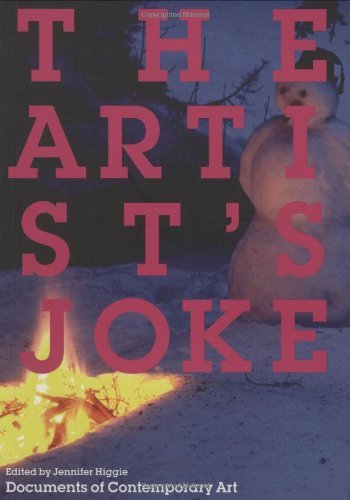
The Artist's Joke (Whitechapel: Documents of Contemporary Art)
Ever since Freud's Jokes and Their Relation to the Unconscious appeared in 1905, humor both light and dark has frequently surfaced as a subversive, troubling, or liberating element in art. The Artist's Joke surveys the rich and diverse uses of humor by avant-garde and contemporary artists. The texts collected in this new reader from London's Whitechapel Gallery examine what André Breton called the "lightning bolt" of the unsettlingly comic, as seen in the anarchic wordplay of Duchamp, Picasso, the Dadaists, and Surrealists; Pop's fetish for kitsch and the comic strip; Bruce Nauman's sinister clowns and twisted puns; Richard Prince's joke paintings; art ambushed by feminist wit, from the Dadaism of Hannah Höch in the 1920s to the politicized conceptualism of Jenny Holzer and Barbara Kruger in the 1980s; the serenely uncanny in Mike Kelley's installations and the risibly grotesque in Paul McCarthy's; and the strangely comic scenarios of artists as various as Maurizio Cattelan, Andrea Fraser, Raymond Pettibon, and David Shrigley. Artists' writings are accompanied and contextualized by the work of critics and thinkers including Freud, Bergson, Hélène Cixous, Slavoj Žižek, Jörg Heiser, Jo Anna Isaak, and Ralph Rugoff. Jennifer Higgie is the coeditor of frieze magazine. She has published writings on such contemporary artists as Ricky Swallow, Magnus Von Plessen, and David Noonan.
Artists surveyed include Leonora Carrington, Maurizio Cattelan, Marcel Duchamp, Marlene Dumas, Fischli & Weiss, Andrea Fraser, the Guerilla Girls, Hannah Höch, Mike Kelley, Martin Kippenberger, Barbara Kruger, Sarah Lucas, Paul McCarthy, Bruce Nauman, Claes Oldenberg, Raymond Pettibon, Francis Picabia, Pablo Picasso, Richard Prince, Arnulf Rainer, Ad Reinhardt, ED Ruscha, Carolee Schneemann, David Shrigley, Robert Smithson, Annikia Ström, Kara Walker, Andy Warhol Writers includeHugo Ball, Henri Bergson, André Breton, Hélène Cixous, Sigmund Freud, Jörg Heiser, Dave Hickey, Jo Anna Isaak, Ralph Rugoff, Peter Schjeldahl, Sheena Wagstaff, Hamza Walker, Slavoj Žižek
0 notes
Photo




Sometimes I photoshop, part two:
Mia Karlsson merged into both of the Elissa skirts she wore; the red in 2000/2003, and the stripy in 2009. I never found any photos of her in either, but I had partial photos of her which only needed a skirt. Hence...
Row 1: Photoshopped photo of Mia Karlsson in “Think of Me”, next to a photo of Susanne Elmark, whose skirt I borrowed
Row 2: Photoshopped photo of Mia Karlsson in “Angel of Music”, along with Jennifer Wagstaffe, next to a photo of Teresia Bokor, whose skirt I borrowed
#elissa#phantom of the opera#mia karlsson#christine daae#think of me#jennifer wagstaffe#susanne elmark#teresia bokor#photoshopped#because i needed it
30 notes
·
View notes
Photo


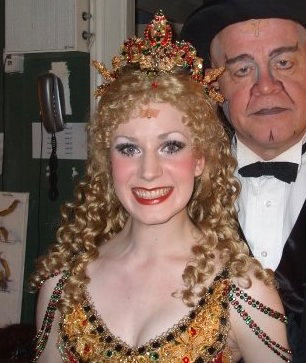






Variety in shades in Meg Giry’s wig (replica productions)
Nicole Cato, West End
Lindsey Wise, West End
Jennifer Wagstaffe, Copenhagen
Regina Schukina, Moscow
Layla Harrison, West End
Deanna Doyle, Broadway
Georgia Ware (as u/s), West End
Alicia Beck, West End
Jee Hyun Noh, World Tour
#meg giry#degas wig#phantom of the opera#hannibal slavegirl#nicole cato#lindsey wise#jennifer wagstaffe#regina schukina#layla harrison#deanna doyle#georgia ware#alicia beck#jee hyun noh
116 notes
·
View notes
Text
ben-sukhavati replied to your post:
The new Danish Christine, Isabel, is 5'10 and I...
Isn’t that kind of odd, since the breakdowns usually indicate the chorus girls should be about 5'4" - 5'6", and Christine is supposed to blend into the chorus?
That might be valid for an international standard, but the Danish casting call didn’t mention a specific height for any other than the male ballet dancers:
“Kvinderne må beherske tåspidsteknik og mændene skal være mindst 173 cm høje” (the women must master en pointe technique, and the men should be 173 cm or taller)
With one or two tall ballerinas, Christine blends in well anyhow. The last Copenhagen Meg, Jennifer Wagstaffe was quite tall and slender; taller than both the Christines in fact:

The Raoul in this photo, Tomas Ambt Kofod, is the Phantom this time around. As you can see he is standing one step down and he was still a lot taller than the Christine, Teresia Bokor. He towered over her. She was quite tiny - around 156 / 5’1" - but the same went for the taller Mia Karlsson. And the Phantoms were just as tall, or more - Peter Jorde a whopping 193 / 6'4”.
So yeah, Scandinavian people are in general tall, and that will be reflected in the Phantom casts as well. It’s not just one tall cast member, rather it’s a big chunk of both leads and ensemble.
#christine height#teresia bokor#tomas ambt kofod#jennifer wagstaffe#peter jorde#poto denmark#poto denmark revival
16 notes
·
View notes
Photo

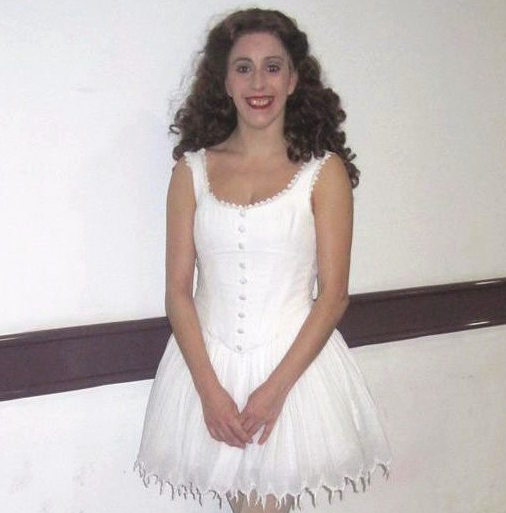
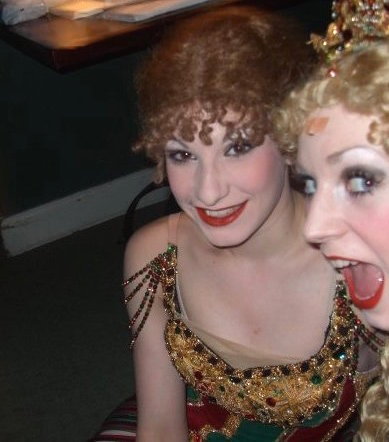





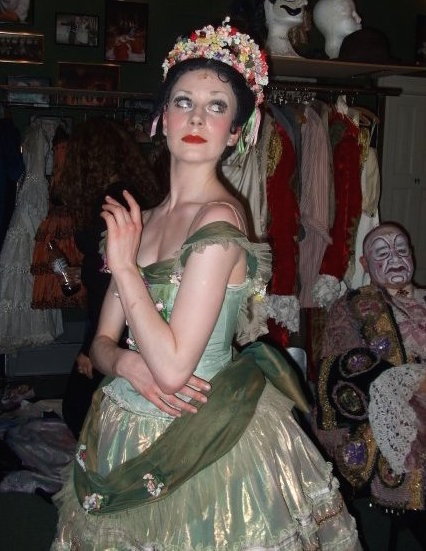
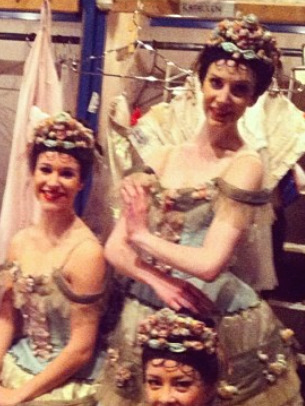
Ballerinas in Copenhagen and in the World Tour
Catherine Leppingwell (Copenhagen, WT, also Stockholm and Hamburg)
Beth Peach (Copenhagen, WT Guangzhou)
Rachel Horn (Copenhagen, WT, also Essen)
Caroline Scott (Copenhagen, WT)
Jennifer Wagstaffe (Copenhagen + WT Shanghai and Daegu)
(I might have mixed up Jennifer Wagstaffe and Bryony Whitfield in that last photo... but it was the only I found that remotely looked like JW from the World Tour, so I went by it... sorry about eventual mislabeling there)
#corps de ballet#phantom of the opera#poto denmark#poto world tour#catherine leppingwell#beth peach#rachel horn#caroline scott#jennifer wagstaffe#degas#sylvan glade#hannibal slavegirl
26 notes
·
View notes